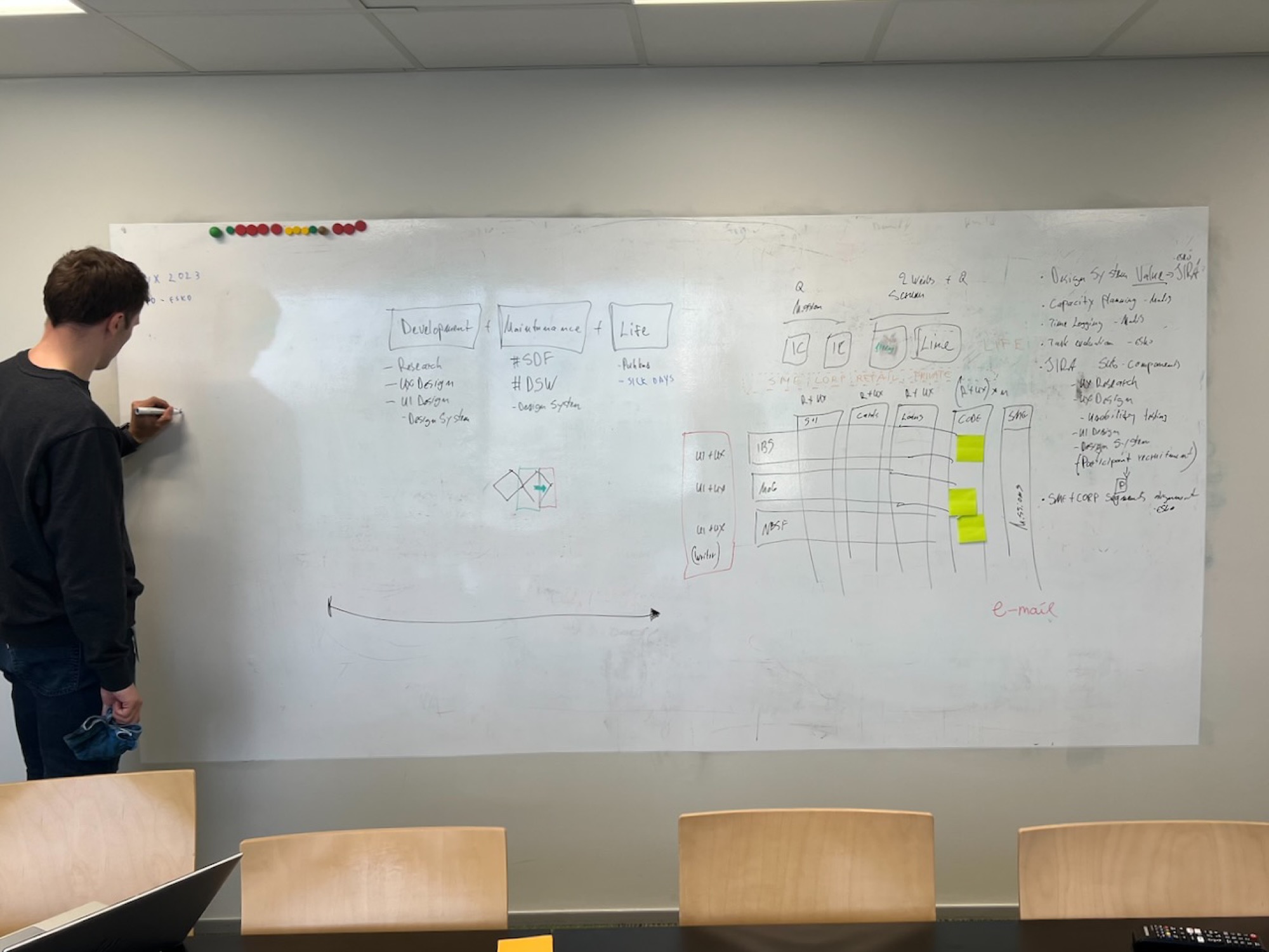The partnership mindset
Development talks are learning partnerships, not performance reviews. Most professionals approach these conversations confused, afraid, or simply unprepared. They carry the school mindset where the teacher validates and directs. They wait to be told what to improve, expect the manager to identify their growth areas, and treat development as something done to them rather than by them.
But your manager isn’t a teacher grading your performance—they’re a partner who can unlock resources, create opportunities, and remove obstacles to your growth. The difference in outcomes is staggering when you shift from passive recipient to active architect of your development. This reframing changed how I approached every conversation that followed.
How I learned this lesson
I once realized my manager had no clue about my needs or how I could grow for mutual benefit. I was already leading design work and conducting user interviews and usability tests, but my methods lacked structure. I couldn’t articulate a clear process, and I wasn’t aware of advanced research techniques that could elevate our work.
So I took time for reflection and devised a systematic plan to upgrade my user research practices. I outlined specific tasks, evaluation methods, and the support I’d need from my manager. When I presented this well-prepared case with clear arguments and organizational benefits, the response surprised me—I got full support, including a week-long training in Amsterdam.
That training became a major upgrade to my knowledge, which I immediately put into practice. In IT consulting, where new business came through RFPs, our evidence-based user experience analysis and recommendations improved client perception of our professionalism. We started winning more design work and hired two more designers to handle the increased demand—all directly traceable to capabilities I developed from that one strategic development conversation.
That’s when I understood the power of preparation—and that preparation begins with knowing yourself.
Start with self-awareness
Your development begins with two questions you must answer alone. First, what are your long-term ambitions? Not what you think you should want, but what genuinely motivates you to grow. Maybe you’re pursuing a leadership role because it’s the expected path, but what you actually want is to become a recognized subject matter expert. That distinction matters.
Second, conduct brutally honest introspection about your existing skills and capabilities. Identify the gaps between where you are and where you want to be. Then—and this is critical—determine what can be developed in your current work setting with organizational support. Without this self-awareness, you’re asking your manager to be a mind reader. With it, you can have a strategic conversation about closing specific gaps that serve both your ambitions and organizational needs.
The preparation framework
I reserve two hours for introspection before every development conversation. I reflect on the previous year with specific questions:
- Which goals did I achieve?
- What am I proud of?
- What could have been better?
- What did I learn?
This grounds me in reality and helps me appreciate progress before planning forward. Then I brainstorm goals for the following year, thinking about what I want to learn and which development paths interest me. I don’t censor at this stage—I let themes emerge naturally, whether continuing existing approaches or exploring something completely new.
Next, I test reality. For each potential goal, I think about purposes, intended outcomes, and realistic timelines. This keeps me grounded and prevents aspirational thinking from overwhelming achievable progress. I sketch plans covering needs, activities, and dependencies for each goal.
Finally, I write each goal using the SMARTER framework1 with clear reasoning for each. SMARTER goals are:
- Specific - focused and clear
- Measurable - with built-in markers for achievement
- Actionable - using action verbs that prompt you into motion
- Risky - stretching you beyond what feels comfortable
- Time-bound - with deadlines or frequency triggers
- Exciting - connecting to your internal motivation
- Relevant - balanced with your life circumstances and values
This level of preparation transforms development talks from vague conversations into strategic planning sessions—and it naturally leads you to categorize your development needs into three distinct domains.
Three domains of development
Every development goal falls into one of three categories: skills, behaviors, or business value.
Skills are the easiest to define and measure. When I needed to upgrade from basic user research to advanced methods, I could articulate exactly what I wanted to learn and why. Later, I pursued an MBA from EBS because I was an expert in design but lacked business management experience. My manager and organization supported this because I could demonstrate how these business capabilities would help me build a customer-centric team that generated business value. The key is showing how skill development serves organizational needs, not just personal ambition.
Behaviors are harder to address but equally important. They require psychological safety and a trusting relationship with your manager. I benefited from caring, direct feedback about my tendency to take on tasks I should have delegated. I was overcompensating because I didn’t trust others, wanted to control situations, and craved a superhero aura. This limited my ability to focus on my main responsibilities. Once I recognized this pattern and started delegating appropriately, I could dedicate time to strategic work that actually required my expertise. When your manager helps you see behavioral blind spots, you unlock opportunities you didn’t know you were blocking.
Business value is the most complex domain, especially for knowledge workers. If you can directly influence product decisions through generated knowledge, you’ve already impacted future business. Improving collaboration to incorporate design practices into everyday work enables innovation and new opportunities. This year, I have three major initiatives under business goals: measuring and developing UX maturity within the organization, updating and facilitating service design training, and implementing a knowledge management system. Higher UX maturity leads to better product decisions, design training enables cross-functional collaboration, and knowledge management prevents us from solving the same problems twice—all of which directly impact our bottom line.
Advance your career and leadership
Subscribe and get actionable insights sent to your inbox.
- Practical frameworks from years of experience
- Case studies and implementation guides
- Career development strategies for professionals
I respect your privacy. I will never share your email, and you can unsubscribe anytime.
Your manager can help with all three domains—but only when you’ve done the work to identify them clearly and connect them to organizational outcomes.
Making your case
Your manager responds to well-reasoned arguments that show mutual benefit. When I presented my user research development plan, I didn’t just track notes from my notebook—I articulated specific steps and connected them to business outcomes. I was already the de facto design team lead, and clients valued our work, but I showed how improved research methods would strengthen our RFP responses and win more business.
The specificity of my plan and the clarity of organizational benefit made the decision easy. Frame each goal with three elements: what you want to develop, why it matters to the organization, and what specific support you need. When you do your manager’s thinking for them by connecting your growth to team and company success, support becomes the obvious choice. Present your thinking clearly, identify exactly where and what you need from your manager, and make it easy for them to say yes.
Tracking progress and adapting
Development goals are projects that require active management. I incorporate my development plan into my general task list and review these goals as projects at least monthly during weekly reviews. With my manager, I prefer quarterly check-ins. The purpose is keeping them informed about progress, asking for additional support when needed, or agreeing when circumstances change and a goal is no longer attainable.
Some goals become irrelevant and can be scrapped—but your manager must know and agree with this decision. Some become unrealistic and need to be prolonged or postponed. Some need specific support from your manager at critical moments. But the majority must be accomplished during the agreed period. This is both a learning exercise and a case-building exercise for your next development conversation.
These goals are your responsibility. Keep your manager engaged rather than waiting for them to check in on you. This ownership creates momentum that compounds over time—each successful development conversation builds the foundation for the next one.
The transformation
Development talks stop being checkbox exercises when you treat them as strategic partnerships. You stop waiting for validation and start designing your growth path. You stop hoping your manager will figure out how to help you and start presenting clear plans with mutual benefits. You stop treating these conversations as something that happens to you and start using them as leverage points for accelerating your career.
The shift requires work—introspection, preparation, and ongoing accountability—but the returns are exponential. Your career belongs to you, and development talks are one of your most powerful tools for shaping it.
“How to Set Goals You’ll Actually Achieve,” Full Focus, accessed October 15, 2025, https://fullfocusplanner.com/how-to-set-goals-youll-actually-achieve/. ↩︎




